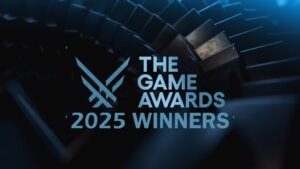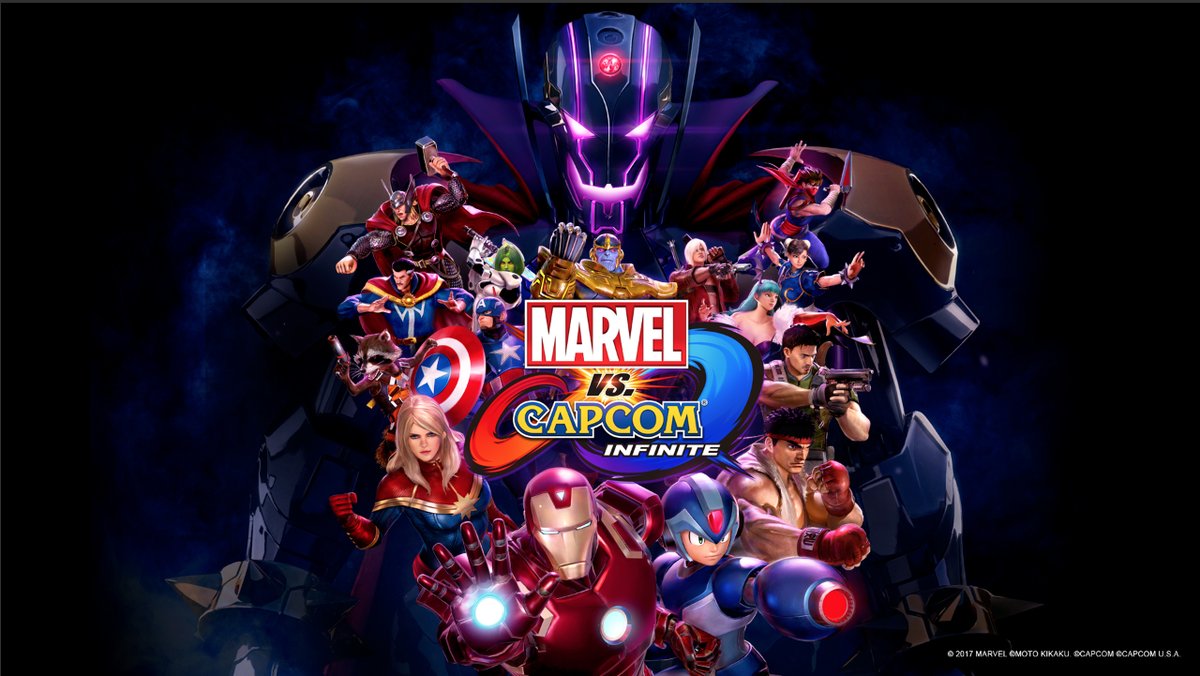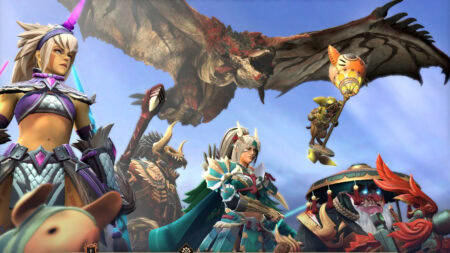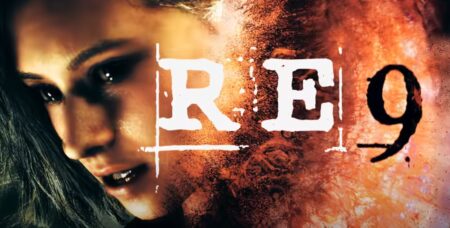Every so often the fighting game community awaits to be graced by the balls-to-the-wall Versus series from Capcom. The Last entry we got from the Marvel vs. Capcom series was six years ago, and has been a staple at tournaments since then. The bombastic art-style, over the top combos, and sizable roster is what made that game a favorite at tournaments. Sad to say, Marvel vs. Capcom: Infinite isn’t quite the home run.
Platform Reviewed: PS4
Platforms Available: PS4, Xbox One, PC
Developer: Capcom
Publisher: Capcom
Release Date: September 19, 2017 (Global)/September 21, 2017 (Asia)
Price: $59.99
This review is based on a review copy provided by Capcom.
First off, to put down some worry, Capcom did get the most important aspect of a fighting game right: the fighting. Marvel vs. Capcom: Infinite puts a new spin on how characters control, while using the classic titles as inspiration. No longer are inputs simplified to low, medium, and heavy attacks; this time it’s more of a half-step towards the Street Fighter series or old school Marvel vs. Capcom. Character attacks are divided between low punches and kicks, and high punches and kicks, with a downward high punch being your launcher. By going this route, characters’ combos are more complex and require a bit more precision, when it comes to timing your inputs. The universal combo for all characters still remains, just added with another button press and directional input.
Along with a different input style, is the new tagging system. Marvel vs. Capcom is known for its tagging and assist mechanics. Infinite streamlines the whole system by removing assists entirely and focusing solely on tagging between two characters, where tagging the next character acts as a combo extender. The result is a game where tagging is encouraged and a lot safer compared to the past.
Contrary to perception, however, this doesn’t dumb down the frantic nature for which the series is known for. Although, there are only two characters per player, the tagging mechanic is a lot more liberal in its usage. You can now tag even during hyper combos, which allows you to take advantage of potential cross-up opportunities, or even do a double hyper-combo. It’ll be exciting to see what the fighting game community will be able to come up with as the game matures and players get more time to optimize their combos. Unfortunately their choices are going to be somewhat limited, since the roster is a downgrade — in terms of numbers — from MvC3, with only 30 characters at launch.
The other major addition, besides the revamped tagging system, are the Infinity Stones. The stones are used as team augmentations, which give an added x factor during fights. There are two main usages for them called Infinity Surge and Infinity Storm. The former is a simple special move, which depends on the stone chosen; while the latter grants your team temporary buffs, again, depending on the stone. The choice of stones are Mind, Power, Soul, Time, Reality, and Space. All add a fun twist to how fights play out, however, one stone does seem to be a tier above the rest: the Soul stone. The Soul stone’s Infinity Surge allows for you to regain some health, but only if you hit your opponent with its blast, while its Infinity Storm allows you two control both of your characters at the same time. The latter is exceptionally useful, as well, since you can bring back a fallen character, although with only a portion of their health restored. It seems that along with an augmentation, the Soul Stone can be used as a trump card to flip the tide entirely, especially if your opponent has only the one character left. Perhaps there’ll be balancing patches in the future that may nerf this, but until then don’t be surprised if you only see one Infinity Stone being used.
Another thing that will be common among Marvel vs. Capcom: Infinite’s player-base is how they perceive the story. Over all, it can be summed up in one word: disappointing. Infinite’s story mode has not taken lessons from another popular fighting game that has super heroes in it, and it painfully shows. I want to say that there was potential for the story and deep down there’s a gem at its core, however, I’d be lying. The story mode is full of cringe inducing voice-acting, awkward character animation, and a downright boring narrative. Never at any point was I eager to see what would happen next, but I was only eager to get through the next fight just to get the story over with.
Before it’d be over, I had to endure the inconsistent voice-acting, where some lines of dialogue were acted appropriately to the scene, while others seemed to be taken straight out from a poorly dubbed 90’s anime. It didn’t help either that dialogue interactions among characters would be met with full one second pauses, as if someone didn’t edit the dead air in between the audio takes. The most prominent example of the inconsistency being Morrigan’s voice-acting, where out of nowhere she’d have a weird mutation of an Irish and Scottish accent, but only for it to be gone after a few words.
Not helping things, either, were the non-humanlike character movements in cutscenes. None of it seemed natural and only added to the awkwardness of the dialogue. Characters would talk with their hands, but exaggerate it to the point of feeling forced and unnecessary. At one point there’s even a part where some characters are running, but really slow as if in slow motion. Sadly, there was no slow motion for that scene. All of this is a shame, since the series has some of the best character animations for a fighting game. Too bad it doesn’t carry over in Marvel vs. Capcom: Infinite’s story.
Lastly, the actual story of the game just ties everything up in a nice bow to add that final dash of disappointment. Marvel vs. Capcom: Infinite’s story forgets to bring the weight of an actual threat, while also lacking any tangible stakes for the universe. At no point was there any actual threat from the villain, known as Ultron Sigma. He would act menacing and threatening, but nothing would come of it. His plot to spread a virus, called the Sigma Virus, which would turn all beings of flesh into cyborgs, never came to any actual fruition. The closest it ever got was just one character and another character’s hand. No innocent citizens, or even other major characters were affected. And of course, defeating Ultron Sigma is the convenient cure that will reverse any signs of the virus. To top it all off, the buildup towards the actual resolution of the story is one McGuffin after another. The McGuffins being the Infinity Stones, and the game isn’t hiding it subtly either by making each chapter revolve around retrieving a stone. Over all, the story is a lackluster ride, which lacks any sort of substance or even cheap thrills of fan-service.
The story is a disappointment, however, not helping at all and to no one’s surprise is the art-style of the game. The art-style is a major draw and one of the most important aspects of any fighting game. It’s one of the quickest ways to convince any random buyer, as a visually striking style is sure to catch anybody’s eye. Marvel vs. Capcom: Infinite doesn’t continue from where UMvC3 left off, with its bombastic visuals. The game instead chooses to go with more realistic visuals, foregoing any cel-shading from the past. The result is an inconsistent mess. Luckily, some characters make the transition quite well, with some examples being Nova, Ironman, and Dormmamu. Unfortunately, any other character with any sort of flesh or a face, looks like a smudged up mess. Characters’ faces tend to have a rough texture to them, with smudged shading to accentuate certain facial features. This leaves faces appearing quite grotesque, with one of the most prominent examples being Dante’s face. Dante, due to the transition, looks like a mannequin that lacks any sleep and perhaps may have picked up a cocaine habit. The transition has left Dante’s bad boy good looks behind and brought with it a demon hunter, with a demon of a face. Again, the art-style of Marvel vs. Capcom: Infinite’s is another part of the game that is to be left desired.
Infinite does redeem itself with its other modes, such as the missions and the online mode. The latter is a surprising upgrade from last generation’s title. It doesn’t take long to find an opponent, and, when you do, the latency of battles is quite tolerable. On the odd occasion, I would get into battles with jumpy frame skips, which left me disoriented and randomly guessing the position of my opponent. More often than not, however, I’d get into a decent fight and be able to enjoy a nice frantic match of Marvel. The former is a great way to familiarize yourself with the game and its characters, especially with the different input style. After a few missions, you’ll be able to get a feel of how a character fights and a few ideas for some good simple combos.
Over all, Marvel vs. Capcom: Infinite is a fun fighting game, but only when it focuses on the fighting. Its story is one they could’ve improved on, or left out to distribute the resources to more characters and a better art-style. It’s a mode that you’ll be done within a weekend, and forget the Monday morning after. Perhaps only remembering the sting of the mediocre experience you just had. To have more fun with the game, stick with the other modes and have a fight online with a random person, or two.
Marvel vs. Capcom: Infinite is a hard game to recommend, especially if you’re just looking for some casual fun. The best decision you can make is wait for further updates to the game and spend your money elsewhere.










